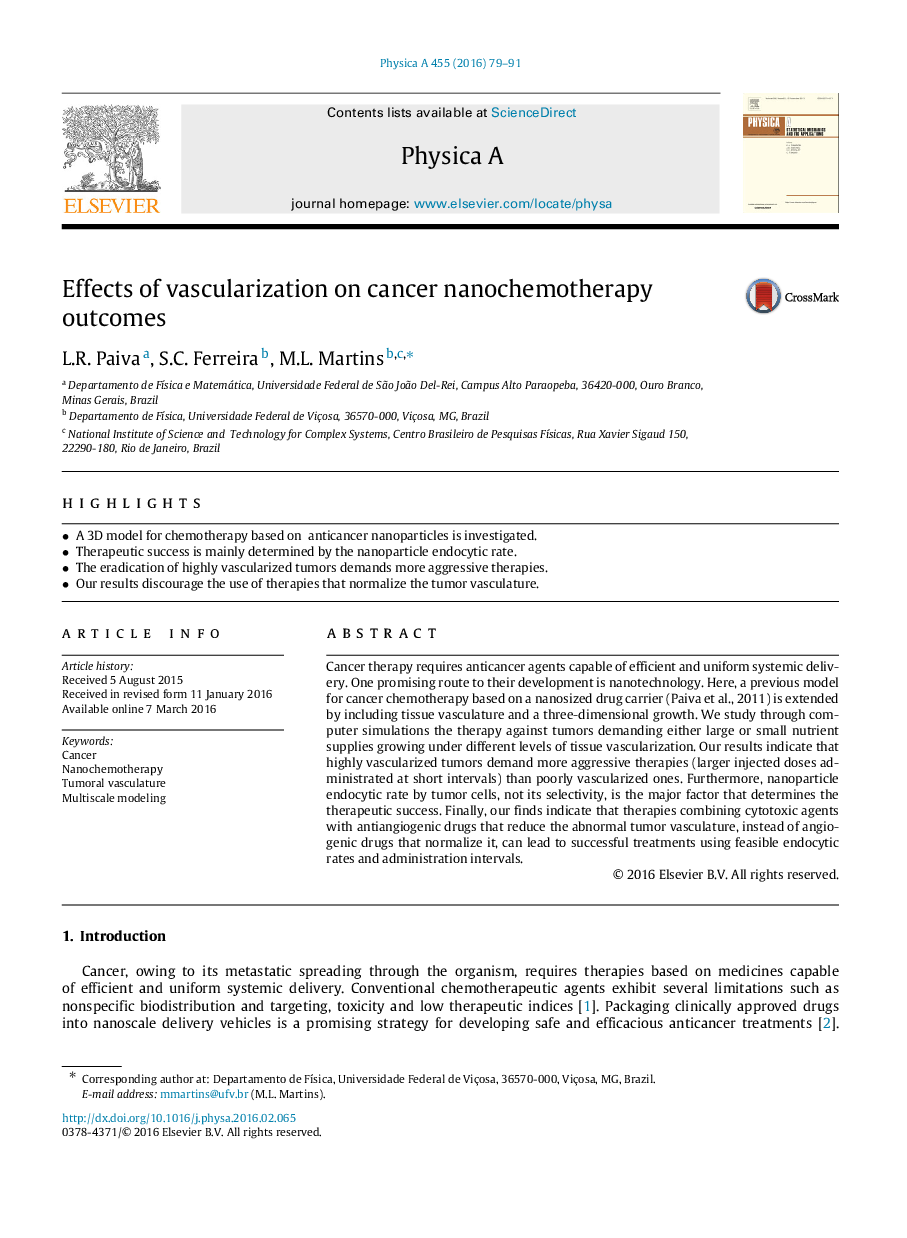| Article ID | Journal | Published Year | Pages | File Type |
|---|---|---|---|---|
| 976480 | Physica A: Statistical Mechanics and its Applications | 2016 | 13 Pages |
•A 3D model for chemotherapy based on anticancer nanoparticles is investigated.•Therapeutic success is mainly determined by the nanoparticle endocytic rate.•The eradication of highly vascularized tumors demands more aggressive therapies.•Our results discourage the use of therapies that normalize the tumor vasculature.
Cancer therapy requires anticancer agents capable of efficient and uniform systemic delivery. One promising route to their development is nanotechnology. Here, a previous model for cancer chemotherapy based on a nanosized drug carrier (Paiva et al., 2011) is extended by including tissue vasculature and a three-dimensional growth. We study through computer simulations the therapy against tumors demanding either large or small nutrient supplies growing under different levels of tissue vascularization. Our results indicate that highly vascularized tumors demand more aggressive therapies (larger injected doses administrated at short intervals) than poorly vascularized ones. Furthermore, nanoparticle endocytic rate by tumor cells, not its selectivity, is the major factor that determines the therapeutic success. Finally, our finds indicate that therapies combining cytotoxic agents with antiangiogenic drugs that reduce the abnormal tumor vasculature, instead of angiogenic drugs that normalize it, can lead to successful treatments using feasible endocytic rates and administration intervals.
